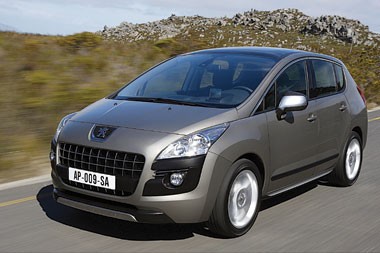Review
Some of your drivers will want a Peugeot 3008 because it’s a pretty good car, but you will not be able to predict who they are. And, to be honest, even Peugeot isn’t entirely sure.
The 3008 is described as a ‘crossover’, but it’s a nominal label that manufacturers use for vehicles that don’t conform to the usual scaling and pricing of traditional sectors.
Using the platform of the 308, Peugeot has effectively jacked the hatchback up, puffed out the cabin space, bolted on a split rear tailgate and added some cursory off-road ability.
But it’s not an SUV, being nowhere near muscular or rugged enough. It’s not an MPV either, being nowhere near pragmatic enough.
It’s not a hatchback, being far too voluminous, nor an estate, not being dull enough.
None of these observations are criticisms in themselves, because in its attempt to be all things to all men it will no doubt find favour with drivers who in it see a bit of a lot of things they fancy.
But for it to sell in the numbers wanted (around 9-10,000 in the UK annually, with around half going to fleets), Peugeot has got to address a couple of key issues.
For a leasing company (or an outright purchase fleet) looking to price it for residual values, the 3008 needs to be benchmarked against a basket of cars and Peugeot is being a touch reticent on this matter, saying it doesn’t want to give too much exposure to the competition.
Sage old industry experts say there needs to be greater clarity: where can you pitch RVs for three years’ time when you don’t have a clear idea of where and against whom the car is positioned?
Will it drop like a lower-medium hatch, or hold up like a small SUV?
I suppose the simplistic answer is somewhere in the middle of everything, as its size suggests – it’s longer, wider and taller than a Nissan Qasqhai, yet shorter than a 308 SW.
However, that’s a punt rather than science, and rental rates might well be mixed for a while until a few short-cycle units hit the open market to give a clearer indication.
Also, pricing is yet to be announced, which is no surprise given the pound’s current rollercoastering, but indications are it will be between 308 and 308 SW, so expect an entry-level diesel model in the early £17,000s.
Peugeot still has time to nail the strategy for the 3008, and it isn’t easy because of its multifarious characters, but is helped by the basic fact that the 3008 is a very good product.
True, its rear, thanks to the need to incorporate a split fold tailgate, has all the aesthetic allure of a garden shed, but from all other angles it has a reassuringly chunky style. Not SUV macho, but not bland MPV carton either.
Inside, Peugeot has continued its improving form, and the build quality and materials of the high, encircling dash and transmission tunnel are excellent, while rear occupants get decent space, too.
Power will be provided by four engines to start with: 1.6 and 2.0-litre HDi diesels offering 110 and 163bhp respectively, and two 1.6-litre petrols with 120 and 156bhp.
Because of the relative CO2 emissions, fleets need only concern themselves with the diesels, which will be as low as 130g/km, while all the petrols are 165g/km and above.
Of interest will be the diesel hybrid to appear in 2011, which will boast CO2 emissions of
109g/km and four-wheel drive courtesy of the rear wheels being driven by an electric motor.
For the traditional versions, drivers will have to make do with two-wheel drive although they can specify a Grip Control system with electronic powertrain remapping for mud, sand and snow, and tyres more suited to a spot of off-roading.
Of more use to most people will be the Mulitflex interior, with easily folding rear and passenger seats to create a flat floor with more than 1,600 litres of space.
The boot has a three-stage system for dividing contents which works with a wonderful simplicity where the thick shelf slides and drops into each level with only one hand needed.
The split rear tailgate has less immediately obvious use, but the lower portion can take 200kg spread across it and gives low access.
The 3008 drives quite nicely, with lightish steering, well sorted suspension and body control, and there is less flabbiness in the gearshift than in some other Peugeots.
It feels more like a hatchback than a heavy SUV or wobbly MPV, especially with the optional anti-roll suspension available on the petrol models.
The two engines – 1.6-litre diesel and petrol – on the launch event offered more than enough performance for most drivers of this sort of car.
The petrol, developed with BMW, is a cheerily sprightly thing, but the diesel will prove the most popular and is quiet and refined.
The driver’s seating position is 10cm higher than in the 308, although it doesn’t have that SUV ‘command’ feel, mainly because of the hugging console that puts everything at the same level as in a standard hatchback, but it is very comfortable indeed.
Verdict
In trying to tick every box, the 3008 could be an unresolved mish-mash, but it does a lot of things very well – space, adaptability, quality and refinement being high points.
Who will buy it, I’m afraid, is impossible to say.
















